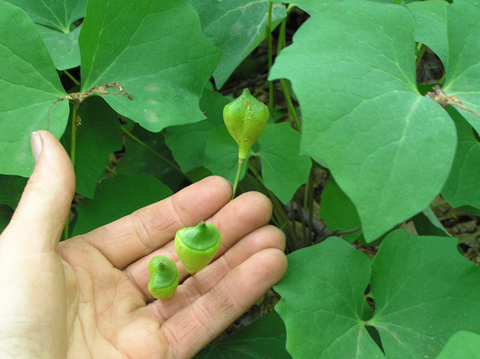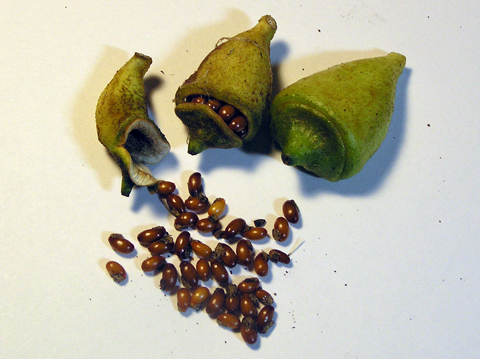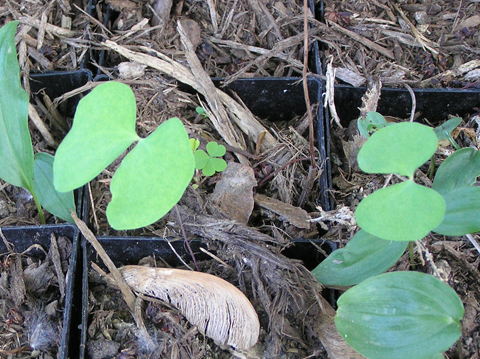 |
| Home | Ordering By Mail | Purchase Manual: Using Native Plants in Urban Landscapes |
|
|||||
Species Name: Jeffersonia dyphyllum
Common Name: Twin Leaf
Zone: 4 to 9
Distribution: western New York and southern Ontario south to Maryland and Alabama.
Seed collection: Collect seed in late May to early June when the seed pods begin to yellow indicating the seed is ripe. Wait until the hinged lids at the top of the pods begin to open then pick the pods from the flower stalks. Each pod holds a dozen or more light brown seeds about the size of a grain of rice.
Seed handling: Seed can be planted immediately after collecting or stratified for storage and planting the following spring. Placing seed directly into the soil gives good results.
Germination requirements: The literature says that several cycles of warm and cold are required before germination occurs. First hand experience indicates that germination will occur the first spring if seed is stratified immediately after collecting. Seed planted in the fall will receive natural fluctuating temperature and germinate in the spring when conditions are favorable. Warm/cold cycles can be artificially created by placing seed in a refrigerator for a couple of weeks and then removing for the warm period. Seed treated in this way, may germinate at a time of the year that is not favorable for plant growth.
The seed germinates hypogeally (below ground) the first season. The root system begins to develop but no shoots will emerge until the following spring. By the time the first leaves emerge in the spring the plant has a well-established root system, which promotes strong shoot growth. A high percentage of seedlings emerge the second or third spring after sowing. Young twin leaf seedlings look like miniature versions of mature plants.
Ecology: Twin leaf is a rare plant in the wild, but is quite easy to grow from seed. It grows best in medium to moist deep fertile soils but is fairly tolerant of drought. It grows in limestone soils with a pH 6.8-7.2. It grows in deciduous woodlands in moderate to deep shade. The flowers emerge early in the spring well before the trees leaf out; each flower lasts just about one day. The leaves remains green and continue growing right through until fall.
Twin leaf is a high priority for established in the wild.. Collect seed from wild populations or from garden plants and sow ¼” to ½” deep in the soil, in suitable woodland. In nature, seed is dispersed by ants. It is better to collect and plant the seed yourself rather than leaving it to nature, as more new plants will be produced. New colonies can easily be established from seed. Each plant forms a large clump of leaves and on good sites many plants can merge to form a carpet. Twin leaf is also highly deer resistant making it desirable for establishment where deer damage is high.

Seeds are mature when the pod lid begins to open.

Harvest seed when the seed turns brown
and the hinged lid of the pod begins to open.

Twin leaf seedlings shortly after germination.
The first true leaves resemble mature leaves in shape.
This page update April 20th 2011